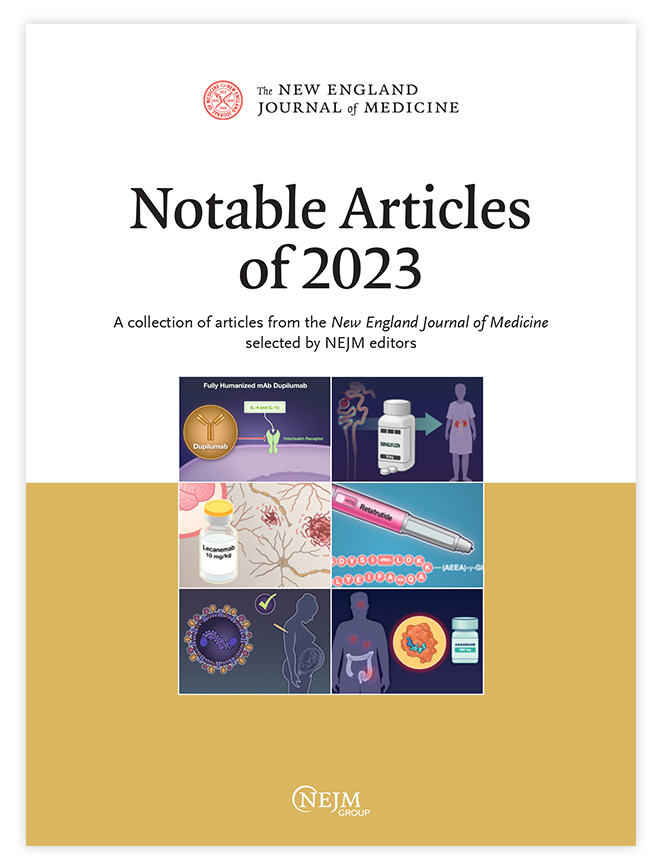Randomized Trial of Targeted Indoor Spraying to Prevent Aedes-Borne Diseases.
IF 78.5
1区 医学
Q1 MEDICINE, GENERAL & INTERNAL
引用次数: 0
Abstract
BACKGROUND Targeted indoor residual spraying focuses insecticide applications on common resting surfaces of Aedes aegypti mosquitoes (an arboviral disease vector) in houses, such as exposed lower sections of walls and under furniture. METHODS We conducted a two-group, parallel, unblinded, cluster-randomized trial in Merida, Mexico, to quantify the efficacy of targeted indoor residual spraying for preventing aedes-borne diseases (chikungunya, dengue, or Zika). Children 2 to 15 years of age were enrolled from households in 50 clusters of five-by-five city blocks. Households in 25 clusters received an annual application of targeted indoor residual spraying (intervention) before each season of aedes-borne disease (July through December). All clusters received routine Ministry of Health vector control. The primary end point was laboratory-confirmed, symptomatic aedes-borne disease. Community effects were assessed with the use of geolocated national surveillance data. RESULTS A total of 4461 children were monitored for up to three seasons (2021, 2022, and 2023). The indoor density of A. aegypti mosquitoes was 59% (95% confidence interval [CI], 51 to 65) lower with the intervention than with control. A total of 422 cases of aedes-borne disease were confirmed, primarily dengue in 2023. In the per-protocol analysis of cluster centers, 91 cases occurred among 1038 participants in the intervention group and 89 cases among 1037 participants in the control group (efficacy, -12.8%; 95% CI, -60.7 to 23.0). In an intention-to-treat analysis of entire clusters, 198 cases occurred among 2239 participants in the intervention group and 199 cases among 2222 participants in the control group (efficacy, 3.9%; 95% CI, -28.1 to 26.7). Adjustment of analyses for mobility or demographic characteristics did not change results. On the basis of 150 cases in the intervention clusters and 202 in the control clusters that were geolocated, the estimated community effect of the intervention was 24.0% (95% CI, 6.0 to 38.6). Two cases of multisymptom adverse events (e.g., nausea, watery eyes, diarrhea, and vomiting) were associated with the intervention. CONCLUSIONS Despite lower entomologic indexes with targeted indoor residual spraying than with routine vector control, the cumulative incidence of aedes-borne diseases was not significantly lower with targeted indoor residual spraying. (Funded by the National Institutes of Health and the Innovative Vector Control Consortium; ClinicalTrials.gov number, NCT04343521.).室内定向喷洒预防伊蚊传播疾病的随机试验。
背景:有针对性的室内滞留喷洒将杀虫剂的施用重点放在房屋中埃及伊蚊(一种虫媒病毒病媒介)的常见栖息表面,如暴露的较低墙壁部分和家具下面。方法我们在墨西哥梅里达进行了一项两组、平行、非盲、集群随机试验,以量化室内定向滞留喷洒预防伊蚊传播疾病(基孔肯雅病、登革热或寨卡)的效果。2至15岁的儿童被从50个5乘5的城市街区的家庭中招募。在每个伊蚊传播疾病季节(7月至12月)之前,25个聚集的家庭每年都进行有针对性的室内滞留喷洒(干预)。所有聚集性病例均接受了卫生部的常规病媒控制。主要终点是实验室确诊的有症状的伊蚊传播疾病。利用定位的国家监测数据评估了社区影响。结果共对4461名儿童进行了长达三个季节(2021年、2022年和2023年)的监测。干预后室内埃及伊蚊密度较对照组降低59%(95%可信区间[CI] 51 ~ 65)。总共确诊了422例伊蚊传播疾病,主要是2023年的登革热。在聚类中心的按方案分析中,干预组1038名参与者中有91例,对照组1037名参与者中有89例(疗效,-12.8%;95% CI, -60.7至23.0)。在整个聚类的意向治疗分析中,干预组2239名参与者中出现198例,对照组2222名参与者中出现199例(疗效3.9%;95% CI, -28.1 ~ 26.7)。对流动性或人口特征的分析进行调整并没有改变结果。在干预组150例和对照组202例的基础上,估计干预的社区效应为24.0% (95% CI, 6.0至38.6)。两例多症状不良事件(如恶心、流泪、腹泻和呕吐)与干预有关。结论虽然室内定向残留喷药的昆虫学指标低于常规病媒控制,但其并未显著降低伊蚊传播疾病的累计发病率。(由美国国立卫生研究院和创新病媒控制联盟资助;ClinicalTrials.gov号码,NCT04343521.)。
本文章由计算机程序翻译,如有差异,请以英文原文为准。
求助全文
约1分钟内获得全文
求助全文
来源期刊

New England Journal of Medicine
医学-医学:内科
CiteScore
145.40
自引率
0.60%
发文量
1839
审稿时长
1 months
期刊介绍:
The New England Journal of Medicine (NEJM) stands as the foremost medical journal and website worldwide. With an impressive history spanning over two centuries, NEJM boasts a consistent publication of superb, peer-reviewed research and engaging clinical content. Our primary objective revolves around delivering high-caliber information and findings at the juncture of biomedical science and clinical practice. We strive to present this knowledge in formats that are not only comprehensible but also hold practical value, effectively influencing healthcare practices and ultimately enhancing patient outcomes.
 求助内容:
求助内容: 应助结果提醒方式:
应助结果提醒方式:


